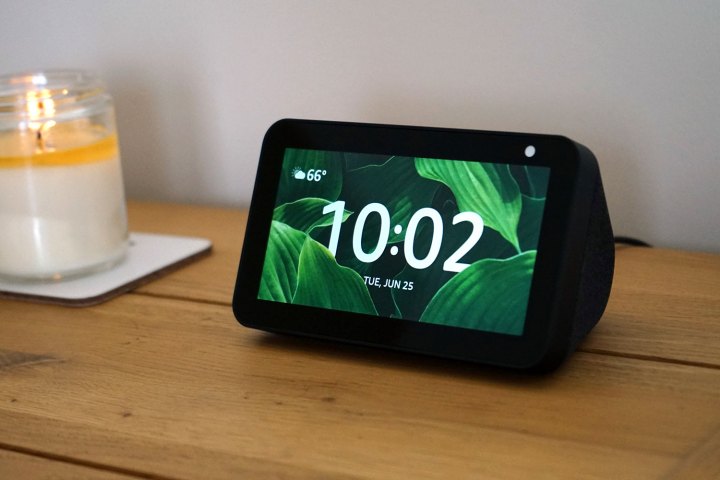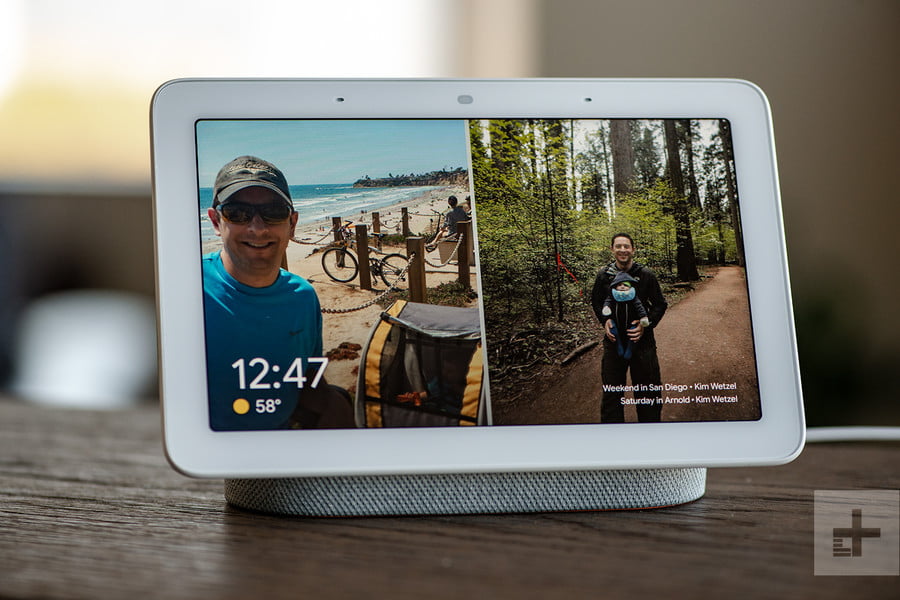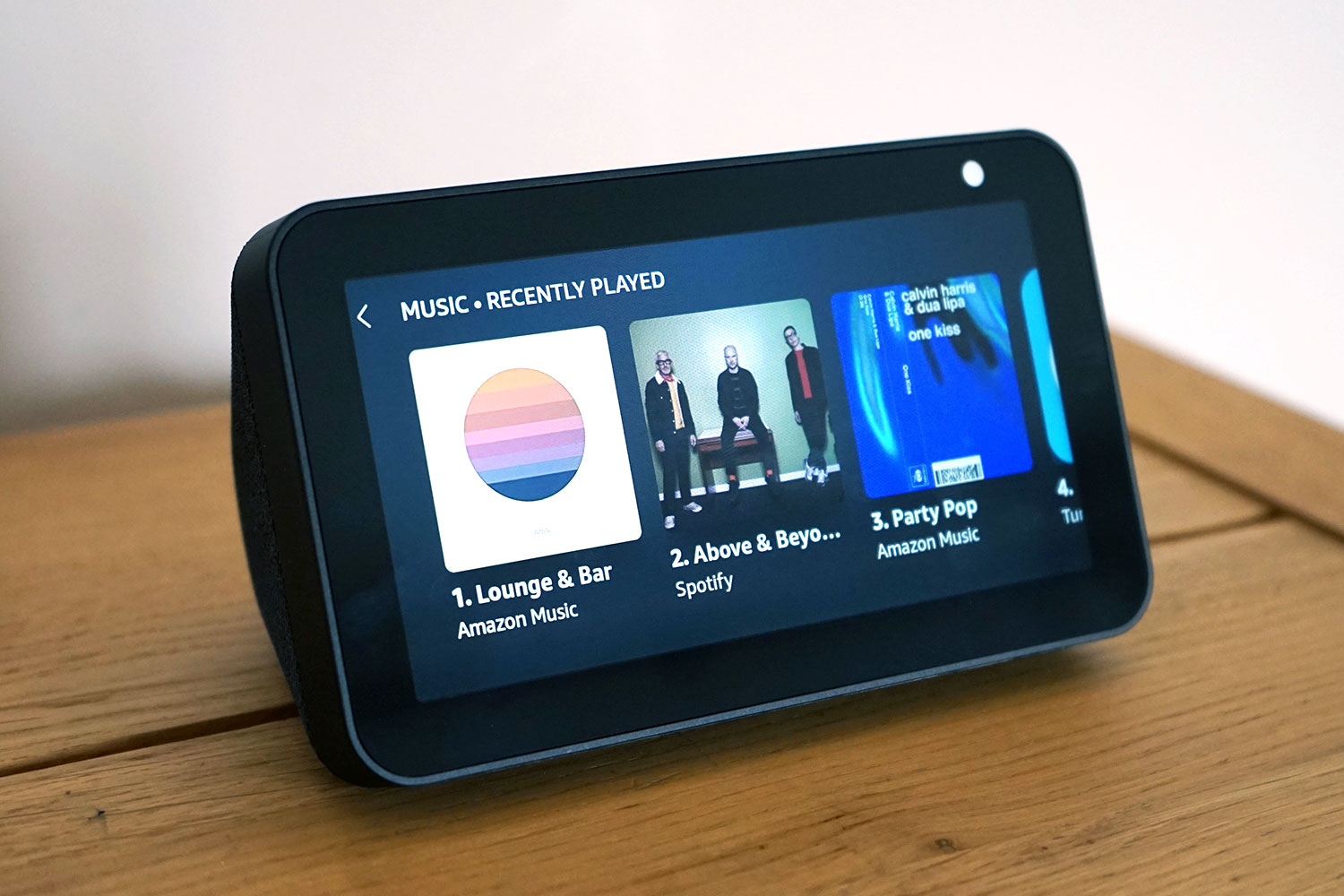The Google Nest Hub and Amazon Echo Show 5 are the entry-level smart displays for their respective smart home platforms. Both smart displays enrich and enliven user interaction. No one is likely to switch between Alexa and Google Assistant because of a single device, but the differences between the Nest Hub and the Show 5 bear scrutiny.
Most initial smart home experiences are voice-centered. Say the appropriate wake word, usually “Alexa” or “OK, Google,” and follow up with a question, request, or command. Smart speakers recognize wake words, understand what you say, and respond audibly. The entry-level Echo Dot and Google Home Mini smart speakers are nearly identical. Both are fabric-wrapped, slightly-oversized hockey puck-shaped devices capable of minimal-quality music audio. The price is right, also. The Dot and Mini each list for about $50 with frequent sales from $25 to $30.
So why even buy a smart display? The visual dimension enhances information and adds entertainment value. With either display, you can follow step-by-step recipes on the screen, see the weather for the week, view photos, read song lyrics, view maps, and much more.
We don’t expect anyone would shift from one smart home platform to another based on the differences between the Nest Hub and Echo Show 5. Exploring the Nest Hub and Show 5’s features and relative strengths can help you know what to expect.
Here’s how the Google Nest Hub and Amazon Echo Show 5 stack up:
Dimensions and physical description

The Echo Show 5 and Google Nest Hub smart displays are compact and convenient to place almost anywhere. Neither device looks out of place on a nightstand, kitchen counter, family room or den side table, or on a desk next to a laptop or monitor. If space is tight, the Show 5 requires less room.
The Google Nest Hub measures 7.02 inches x 2.65 inches x 4.65 inches (width x depth x height) and weighs just over a pound at 16.9 ounces. The Hub has a 7-inch diagonal touch screen with color and ambient light sensors, but there is no camera. There’s a single port on the back to connect the cable for its 15-watt DC adapter. A single left-to-right slide turns the Hub’s microphone on and off, and a rocker button on the back of the right side raises, lowers, and mutes the speaker volume. All other controls use gestures.
Weighing in at 14.5 ounces, the Amazon Echo Show 5 measures 5.8 inches x 2.9 inches x 3.4 inches (WxDxH). The Show 5’s 5.5-inch diagonal touchscreen has a 1MP camera with a manual shutter you can close by sliding a button on the top edge of the display. In addition to a power port, the Show 5 also has a 3.5mm audio out port for headphones or an external speaker. There are two microphones, volume + and – buttons, and a single button to turn off the mics and the camera.
Display
Few people would choose a Show 5 or a Nest Hub to watch a TV episode or full-length film. Both displays angle back for easy viewing, but the screens are small and, unless you sit close, you’ll miss most details. Don’t assume either smart display is suitable for watching streaming video and TV.

The 7-inch Nest Hub touchscreen’s Ambient EQ feature automatically adjusts the screen brightness to match the room light. You can also change the brightness manually. Resolution is 1024 x 600, which is fine for photos and graphics. During setup, you can select photos for a slide show or configure the Nest Home to display your Google Photo images.
The Show 5’s 5.5-inch touchscreen display is bright enough to read across the room if the font is large enough. If you use the Alexa alarm to wake up, an ambient sunrise feature gradually increases the display brightness. The Show 5’s 960 x 480 resolution is the same as the native resolution of analog NTSC TVs, but this colorful display is all digital.
Audio
Along with limited video capability, neither the Google Nest Hub nor the Echo Show 5 score high marks for audio quality. Each has a single full-range speaker better for projecting voice content than music. Both smart displays can stream music from Apple Music, Spotify, Pandora, and more, but you won’t use that feature for more than background music.
The Echo Show 5’s 3.5mm audio out jack is a distinct advantage because you can plug in headphones or a two-into-one stereo cable and connect the Show 5 to an external receiver or speakers for decent audio quality.
Communications
You can use both the Google Nest Hub and the Echo Show 5 for voice and video calls, although the Nest Hub has a disadvantage with video calls. Because the Nest Hub has no camera, video calls will be one-way only — you can see them, but they can’t see you.
You can use the Show 5 to call anyone with the Alexa app, an Alexa-compatible smart display, or Skype. The Show 5 also supports announcements. You can say, “Alexa, tell everyone it’s time for dinner,” and the message will play through every online Alexa device with a speaker in your home.

Smart home control
Both smart displays excel as touchscreen control centers for smart home networks.
Swipe down on the Google Nest Hub display to open the Welcome Home screen where you can view rooms, set up routines, access media, and make announcements throughout the house via Google Assistant-compatible devices. You can do all of the above without resorting to any documentation. Installing and configuring new smart home devices with the Nest Hub is also a simple matter of touching and selecting labeled icons on the screen. When necessary, the app directs you to open the Home mobile app.
Swipe left on the Amazon Show 5 display to set alarms, make calls or send messages, turn Alexa-compatible devices on and off, play music, and activate routines. Similar to the Nest Hub, the Show 5 instructs you to use the Alexa mobile app for tasks such as creating routines and pairing devices with Bluetooth accessories.
Price
The Echo Show 5 lists for $90, but Amazon often discounts it to $65 or less for limited periods. The Google Nest Hub lists for $129, it’s frequently on sale for $79 to $99.
Smart display family members
Both smart home platforms also offer smart home displays with larger screens and better audio than the Nest Hub and the Echo Show 5. The second-generation Echo Show and the recently-released Google Nest Hub Max have 1280 x 800 resolution displays and $230 list prices. The Nest Hub Max has a 10-inch touchscreen and a 6MP camera while the Echo Show has a 10.1-inch diagonal measure display and a 5MP camera. Amazon also sells the Echo Spot smart alarm clock with minimal display features.
So, which small smart display is better?
If the Google Nest Hub and Amazon Echo Show 5 were compatible with the same smart home platform, choosing between the two would be easy. The Nest Hub’s combination of a larger display and no camera fits the bill for users who want the best possible screen while ensuring video privacy. The Show 5 has a smaller display, but its camera allows two-way video calls.
If you are platform agnostic and are only considering the merits of the smart display, the Echo Show 5 is the winner, unless you don’t trust webcam security. Smart displays don’t exist in a vacuum, however, and for their relatively low cost, both models deliver significant functional and entertainment value for their respective smart home platforms.

Editors' Recommendations
- Google rolls out new Nest Cam features to Google Home for web
- The Amazon Echo Hub is almost the whole-home hub I’ve always wanted
- Amazon’s Echo family expands with an on-wall hub, smart glasses, and more
- Google Home adds support for Nest Cam Indoor
- Your Google smart home devices just got a lot less talkative






